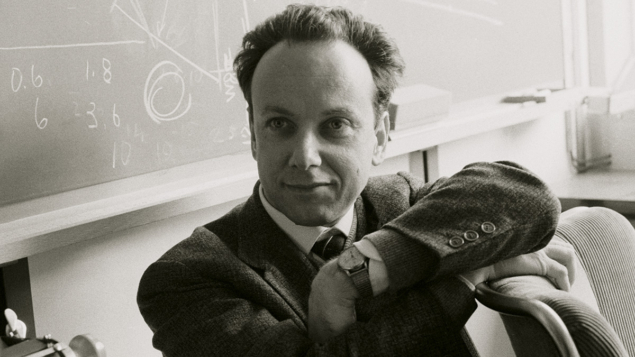
Experimental physicist Giuseppe Fidecaro, who joined CERN in 1956 and continued there long into his retirement, passed away on 28 March.
Born in Messina, Italy in 1926, Giuseppe studied physics at the University of Rome, graduating in 1947 under the supervision of Edoardo Amaldi. Amaldi had become interested in cosmic rays and asked young “Pippo” to help him build a large detector to study the scattering of mesons on an iron target to explore the nuclear force. Between 1952 and 1954, Giuseppe continued to work on cosmic rays at the Tête Grise laboratory, 3500 m above Cervinia, where Maria Cervasi, whom he had met during his studies at Rome, also worked.
In 1953 Amaldi, who had become secretary general of the provisional CERN, suggested that Giuseppe spend time at the University of Liverpool to learn from the new synchrocyclotron being built there. He went to CERN with Maria, by then his wife, in 1956 and began preparing experiments for the 600 MeV Synchrocyclotron (SC), which came into operation in August 1957.
In January 1958, during a conference in New York, Giuseppe attended a presentation by Feynman describing the universal “V–A” theory of weak interactions. He heard that the theory lacked a key experimental ingredient: the decay of a pion into an electron and neutrino, predicted to occur 10 000 times less frequently than to a muon and a neutrino, which had not been observed in two experiments performed by well-known physicists. Upon his return to CERN, Pippo decided with the other members of the SC group that this would be the target of the next experiment. A device was immediately designed and built, and 40 events in perfect agreement with the V–A prediction were presented by Pippo in September 1958. The news put the newly born CERN on the map of the world of particle physics and laid the groundwork for the future discoveries of neutral currents, the W and Z bosons, and the Higgs field.
In 1960, with the start-up of the PS, Giuseppe led his group to measure – using a system of precision scintillators – the antiproton–proton cross section. The following year, he became professor at the University of Trieste and established a group that carried out a series of important scattering measurements at the PS and the SPS, in particular using polarised targets, during the 1970s. Following the proposal and execution of an experiment at the ILL in Grenoble searching for possible neutron–antineutron oscillations, in 1990 he presented an article “Fixed target B-physics at the Large Hadron Collider” at the LHC workshop in Aachen, which proposed, among other things, the use of a very intense proton beam extracted from the accelerator with a crystal, similar to what had been envisaged for the Superconducting Super Collider. This, and discussions with Giovanni Carboni and Walter Scandale, were at the origin of the RD22 collaboration, which for the first time proved the possibility of high-efficiency proton extraction from an accelerator using a bent crystal – a technique that is now used in LHC beam collimation.
Outside physics, Giuseppe made numerous contributions to CERN. In the early 1960s he was a member of the founding committee of the International Center for Theoretical Physics. In 1975 he was appointed as co-chair of a joint scientific committee set up under a collaboration agreement between CERN and the former USSR concerning the use of atomic energy, a responsibility he held until 1986. He was also tasked with coordinating cooperation with JINR in Dubna.
Giuseppe officially retired in 1991 but, together with Maria, continued his work at CERN as an honorary member of the personnel until as recently as 2020, during which time he devoted himself to research in the history of physics. He produced reports of rare beauty and precision, notably three well-documented articles on the contributions of Bruno Pontecorvo, whose friend he became in Dubna in 1989. Giuseppe was also known to CERN visitors, featuring prominently in the film shown in the Synchrocyclotron exhibition. Maria Fidecaro, with whom his rich human and scientific journey was deeply entwined, passed away in September 2023.








